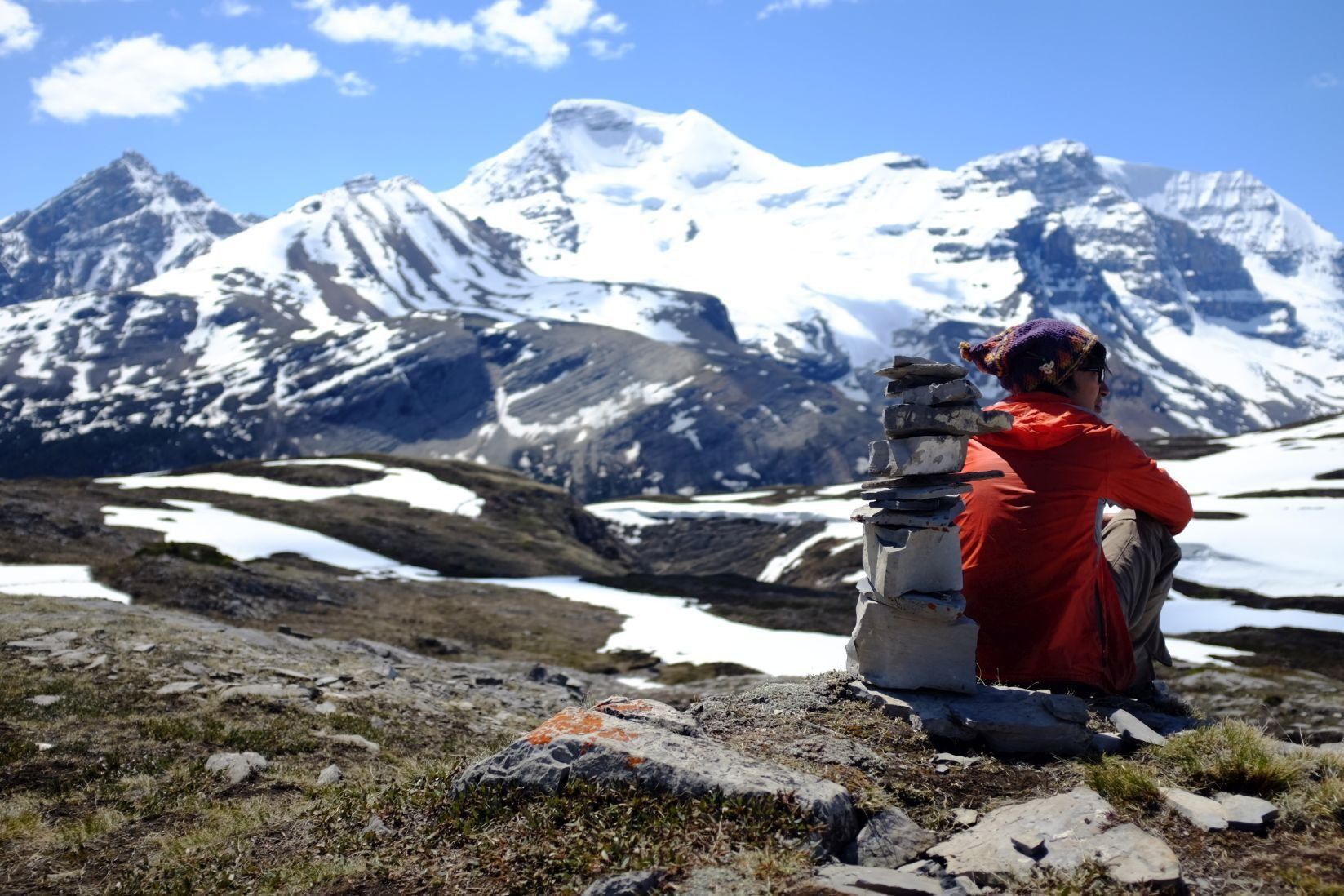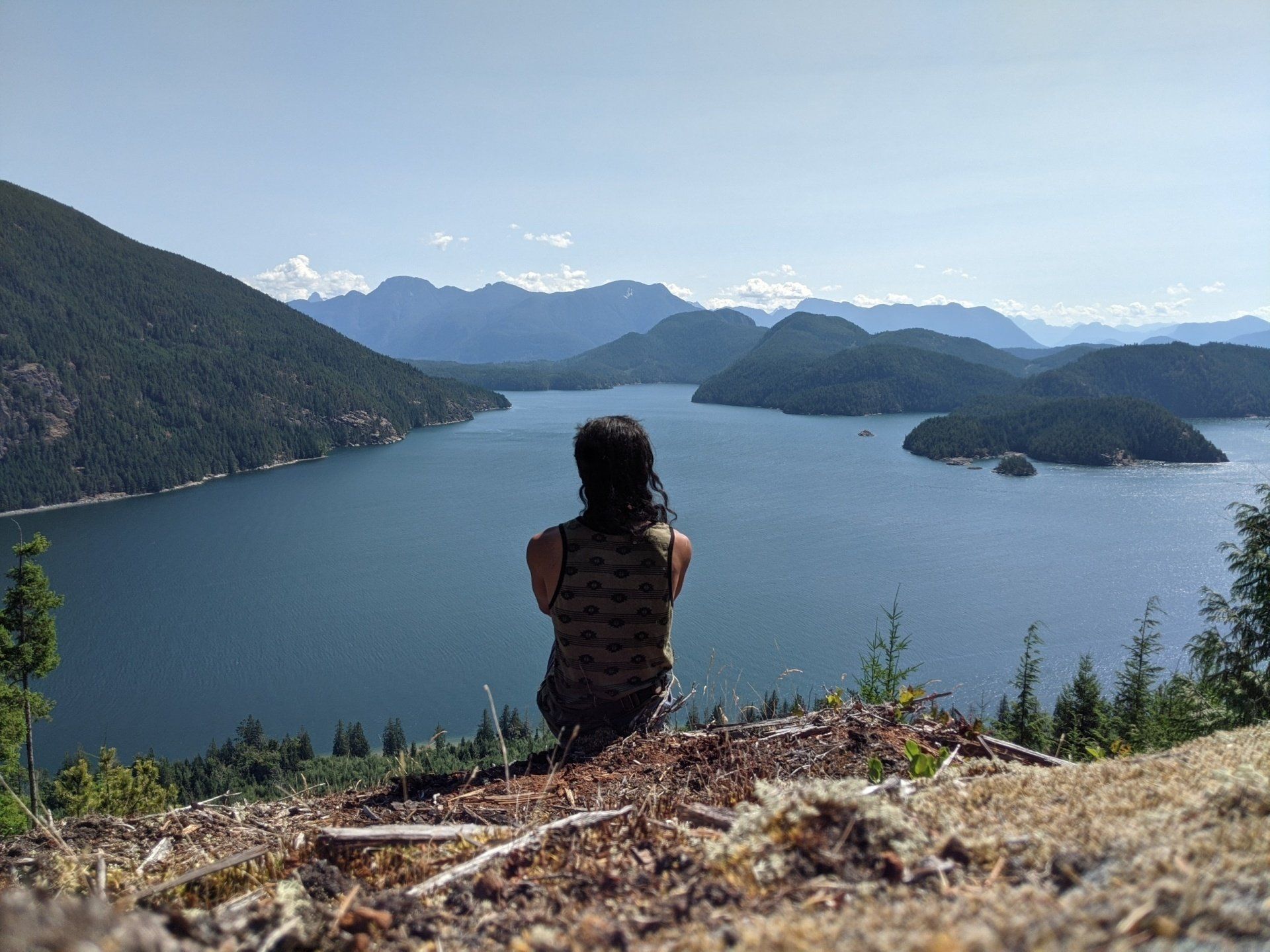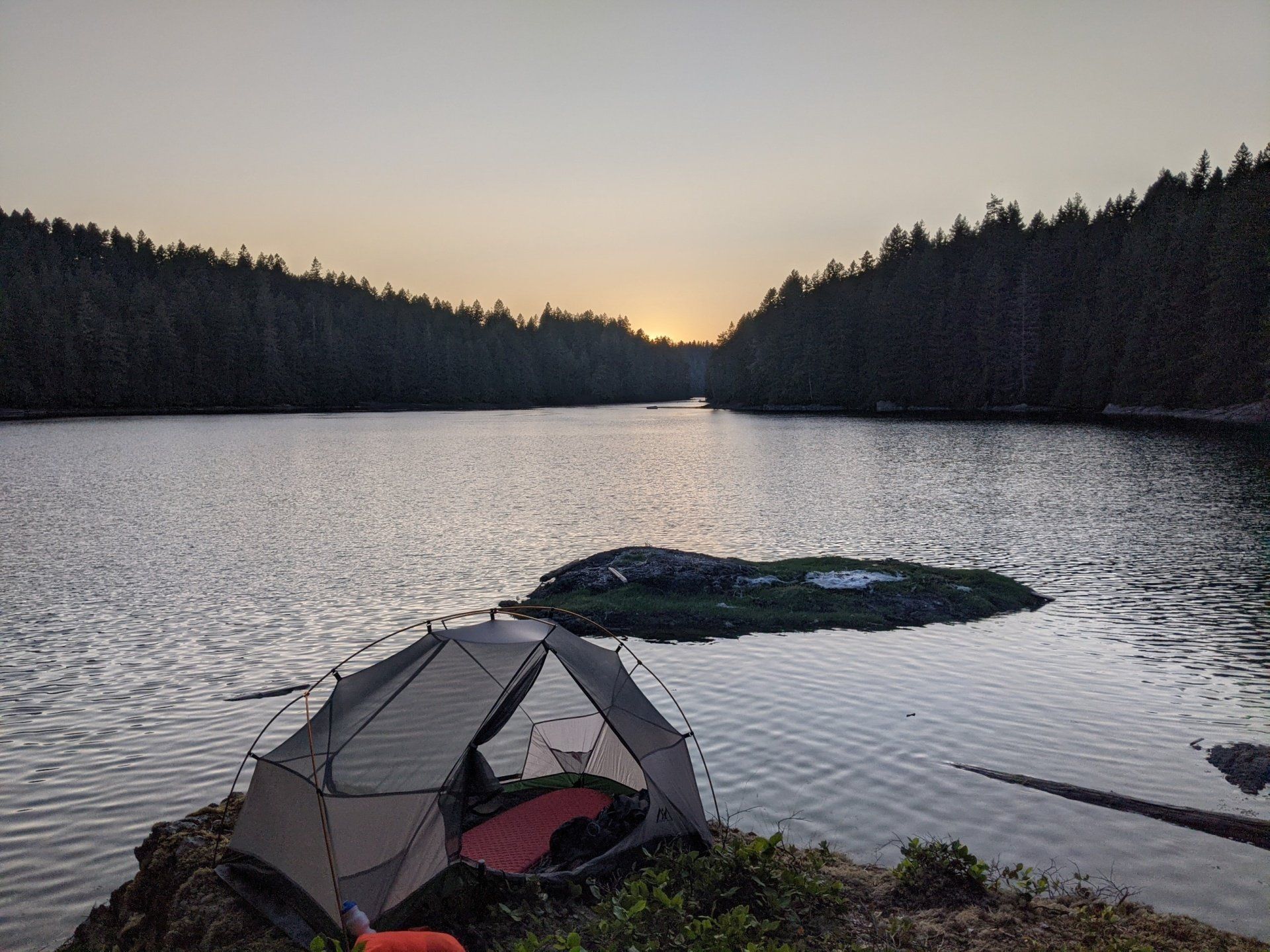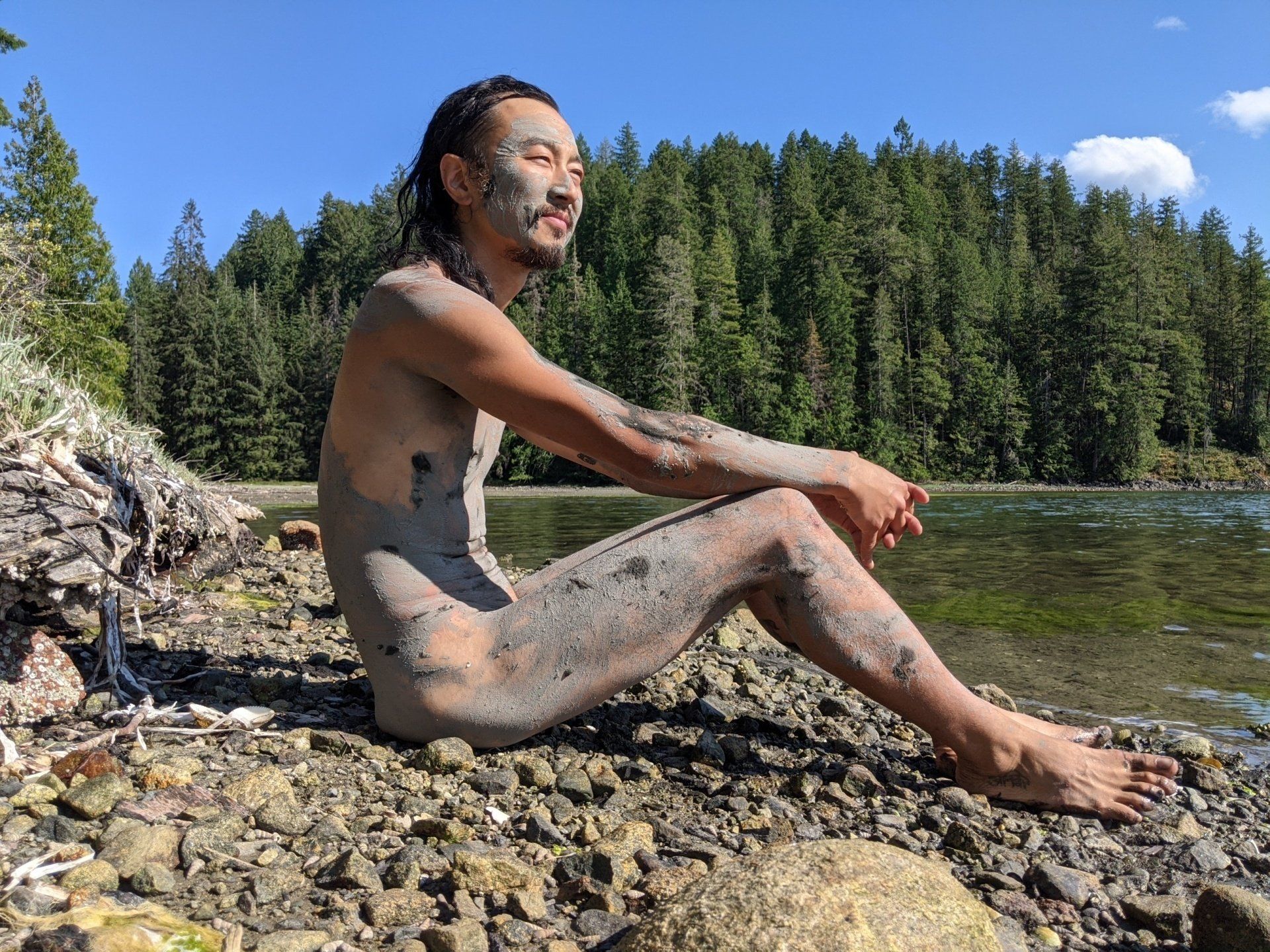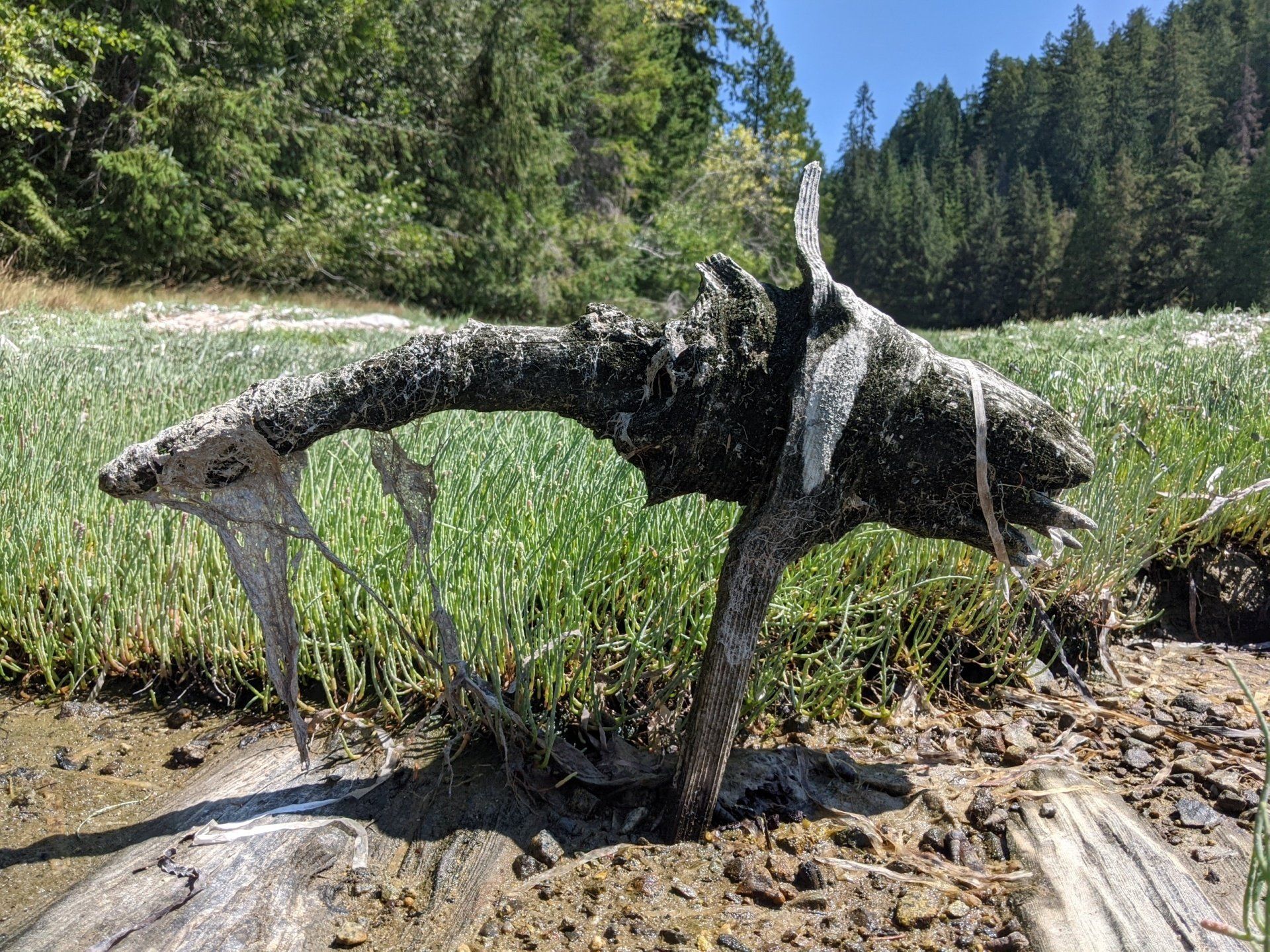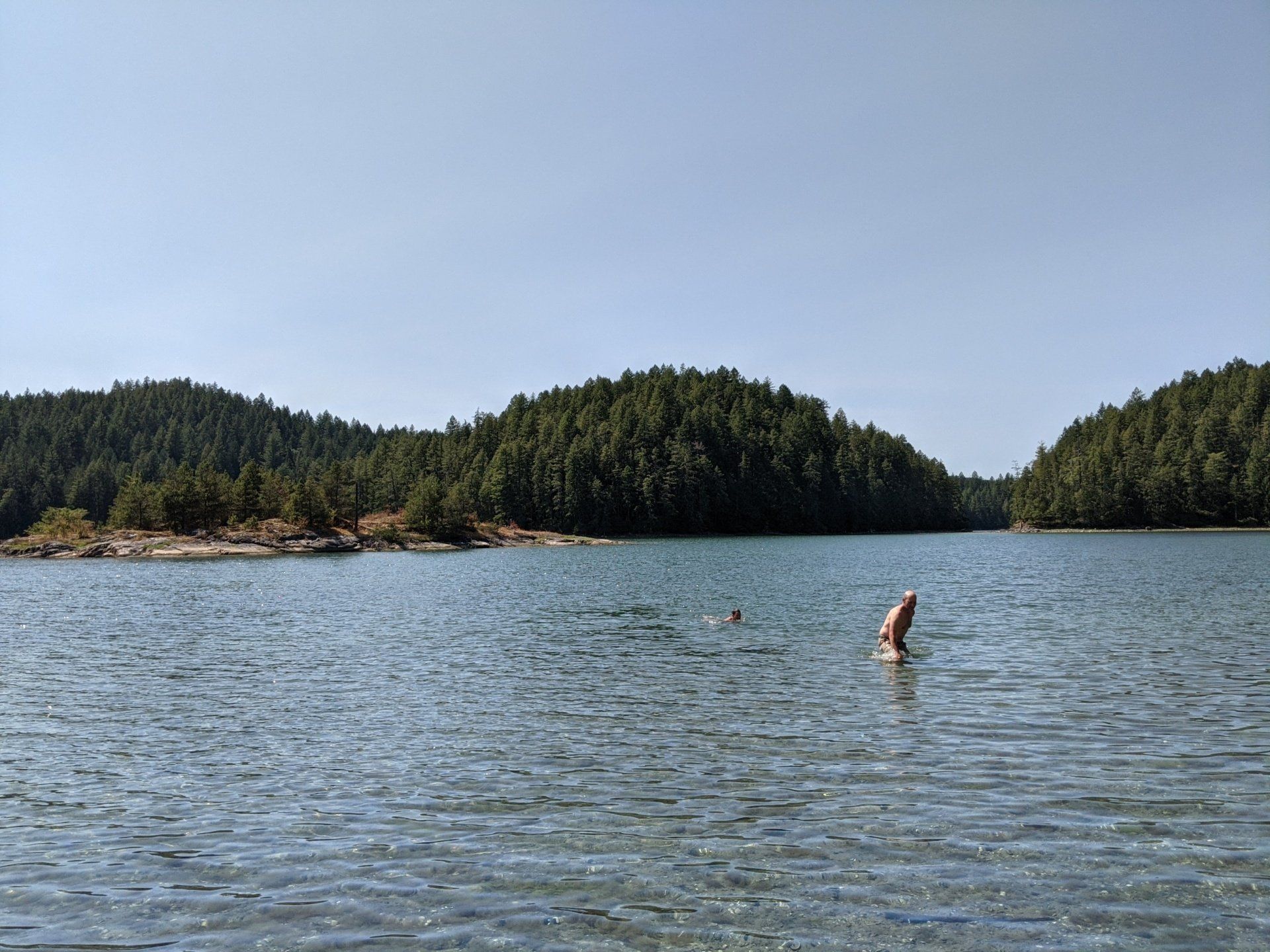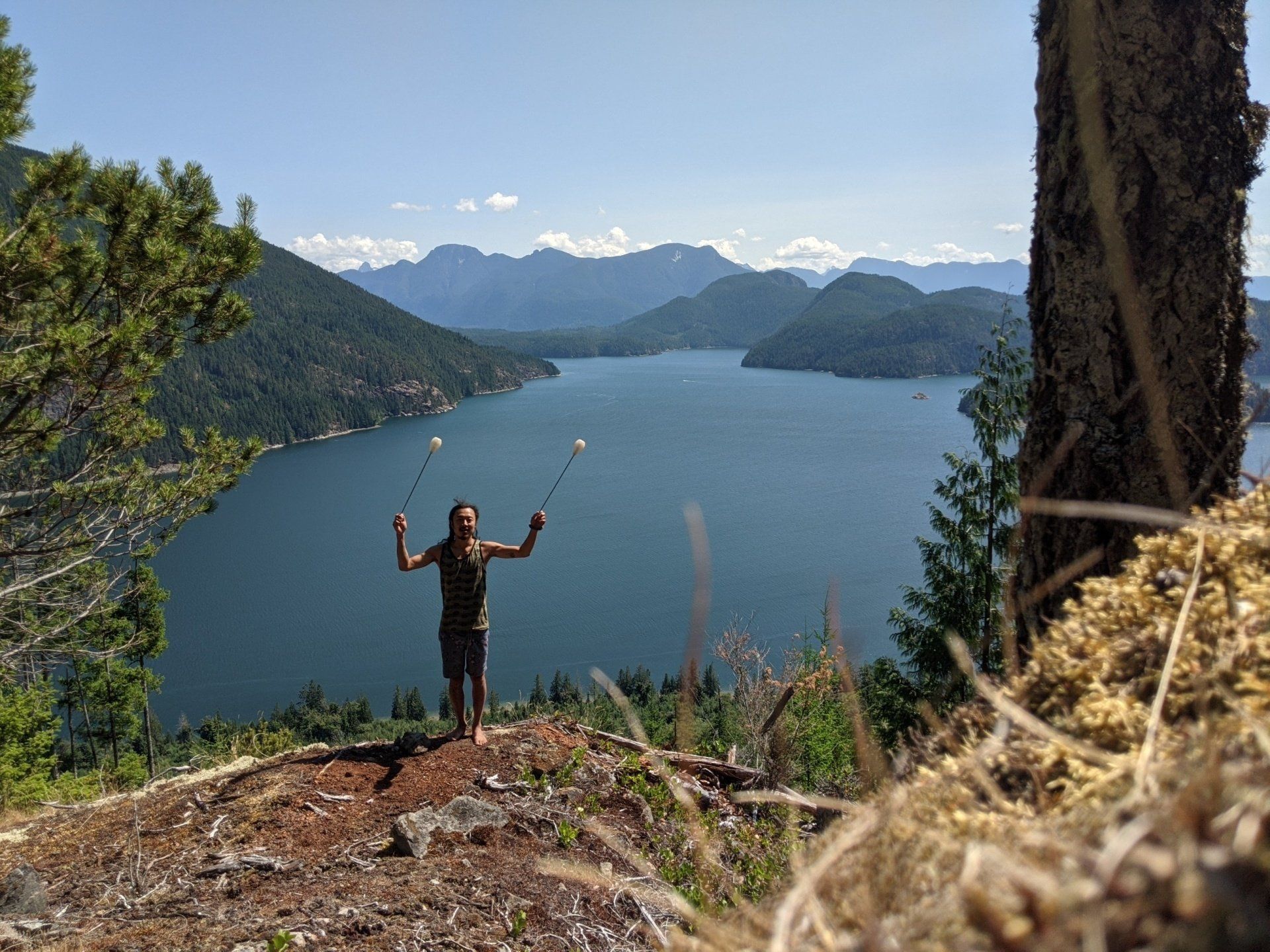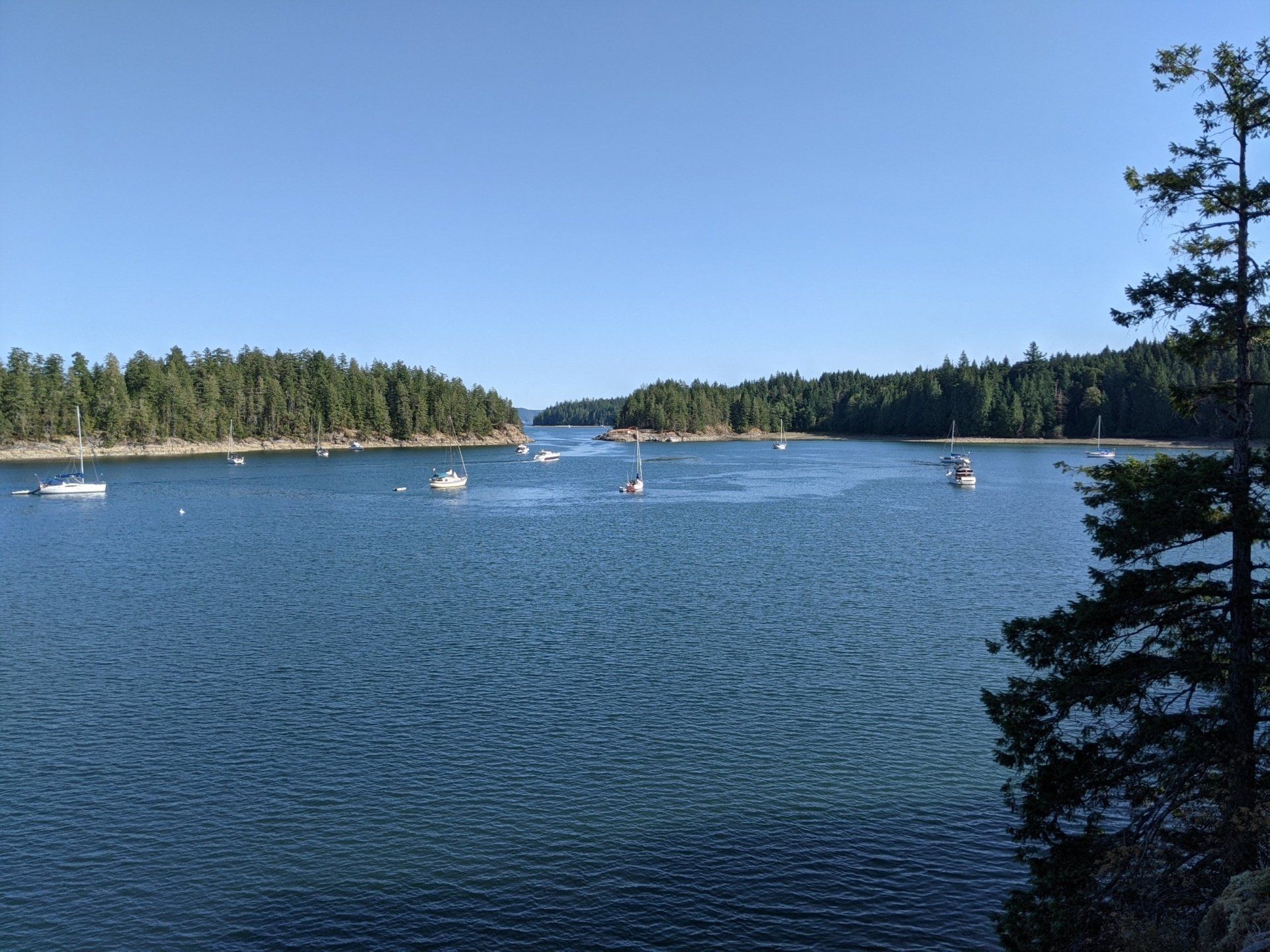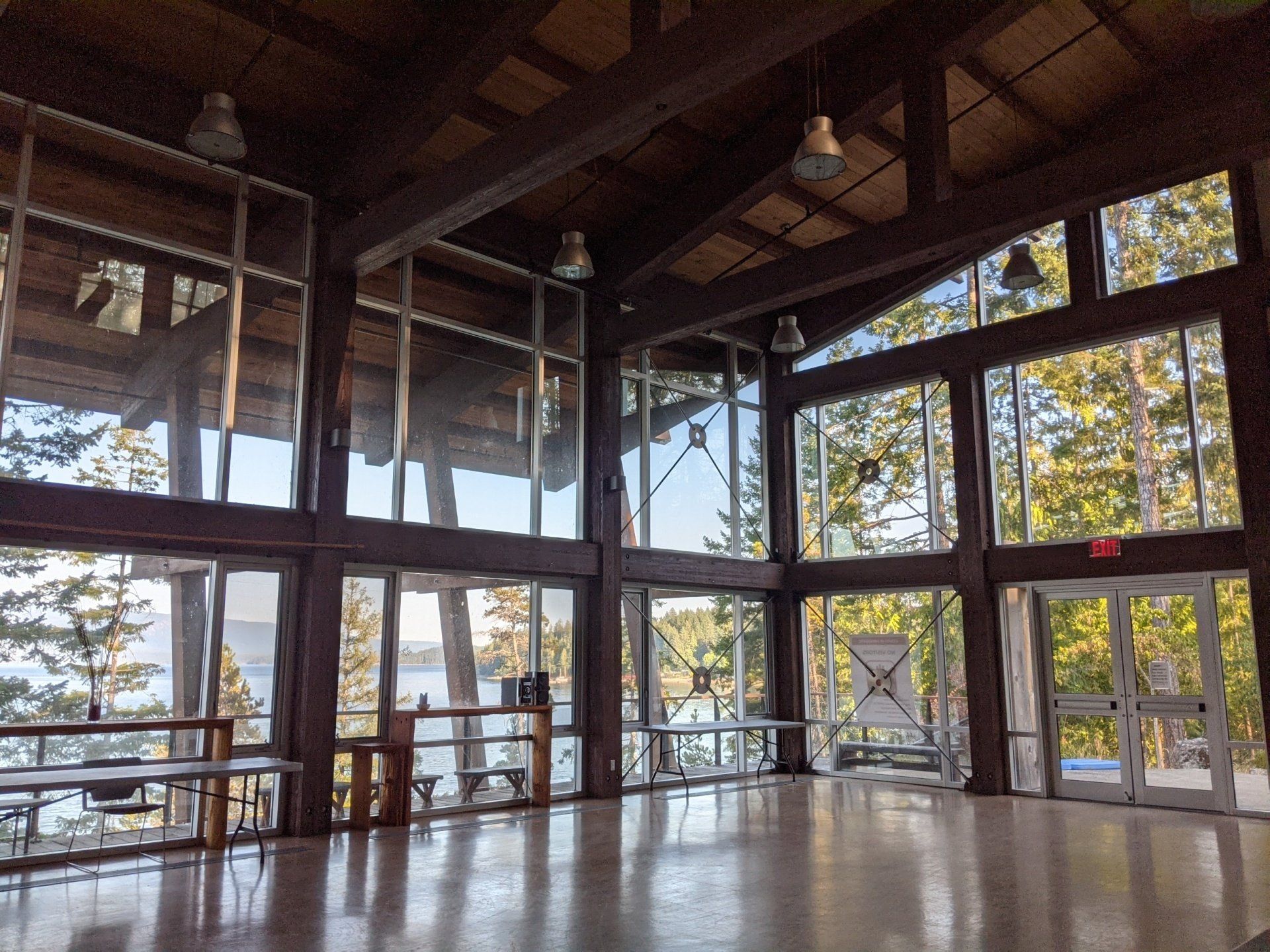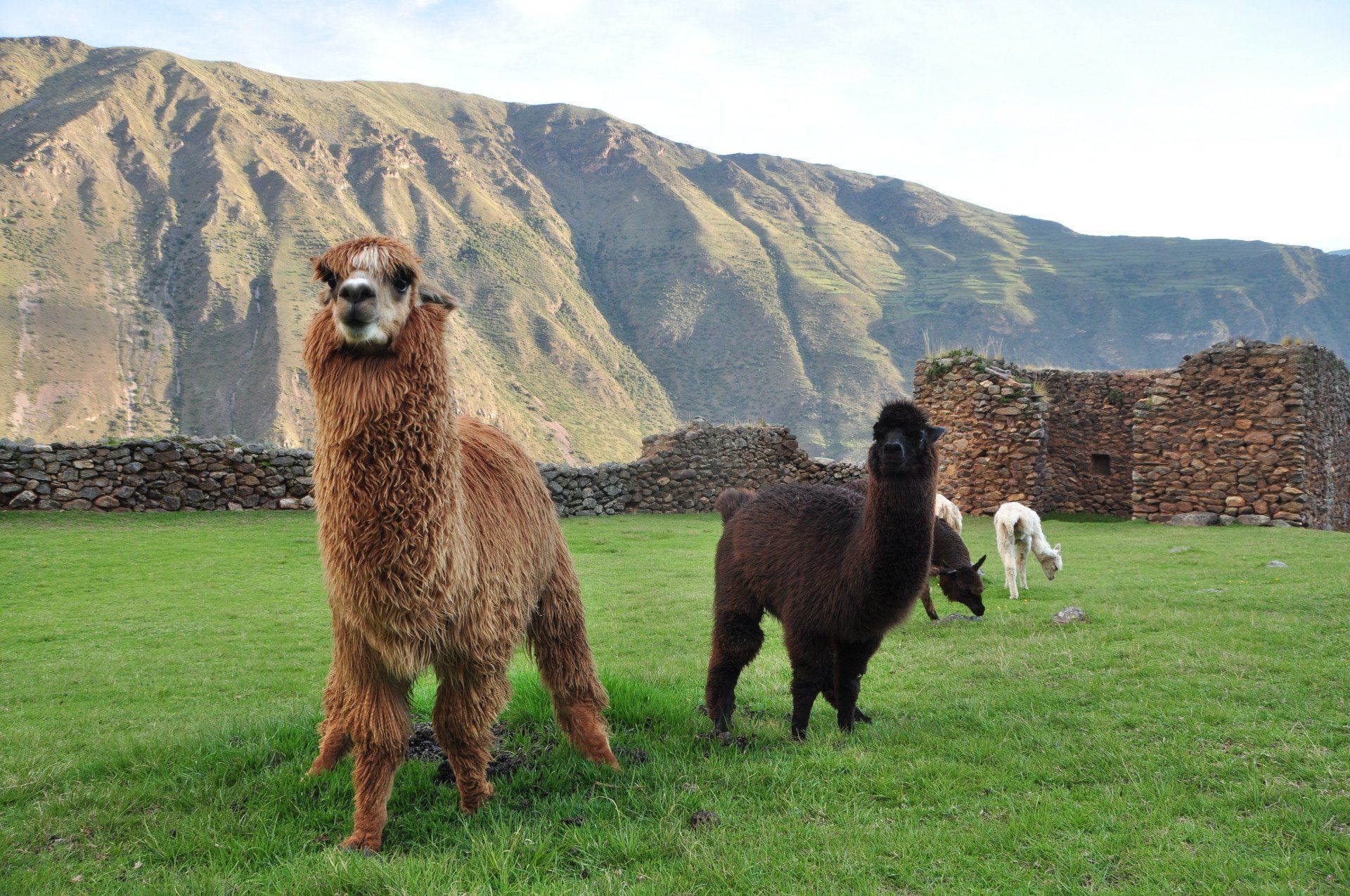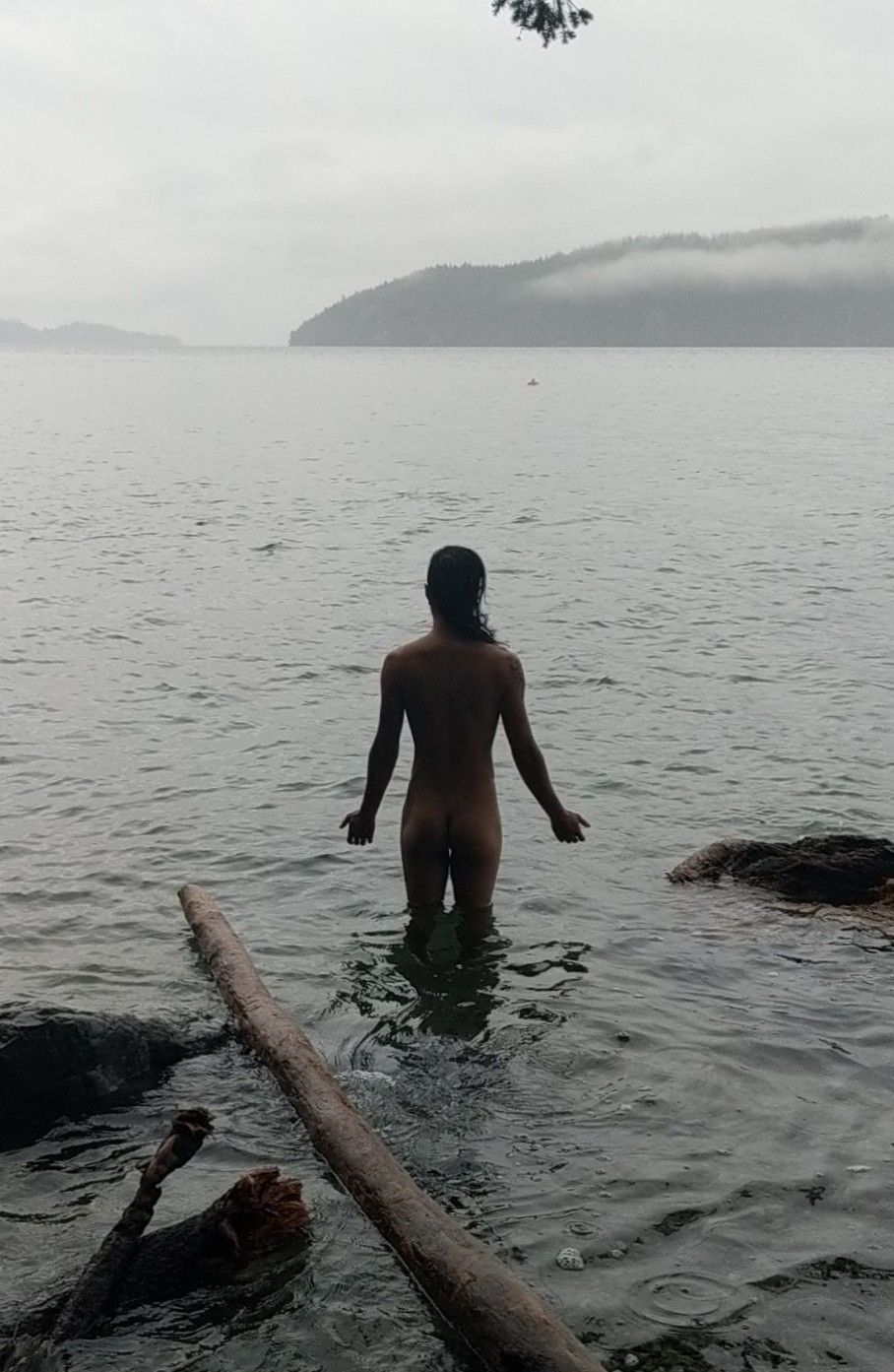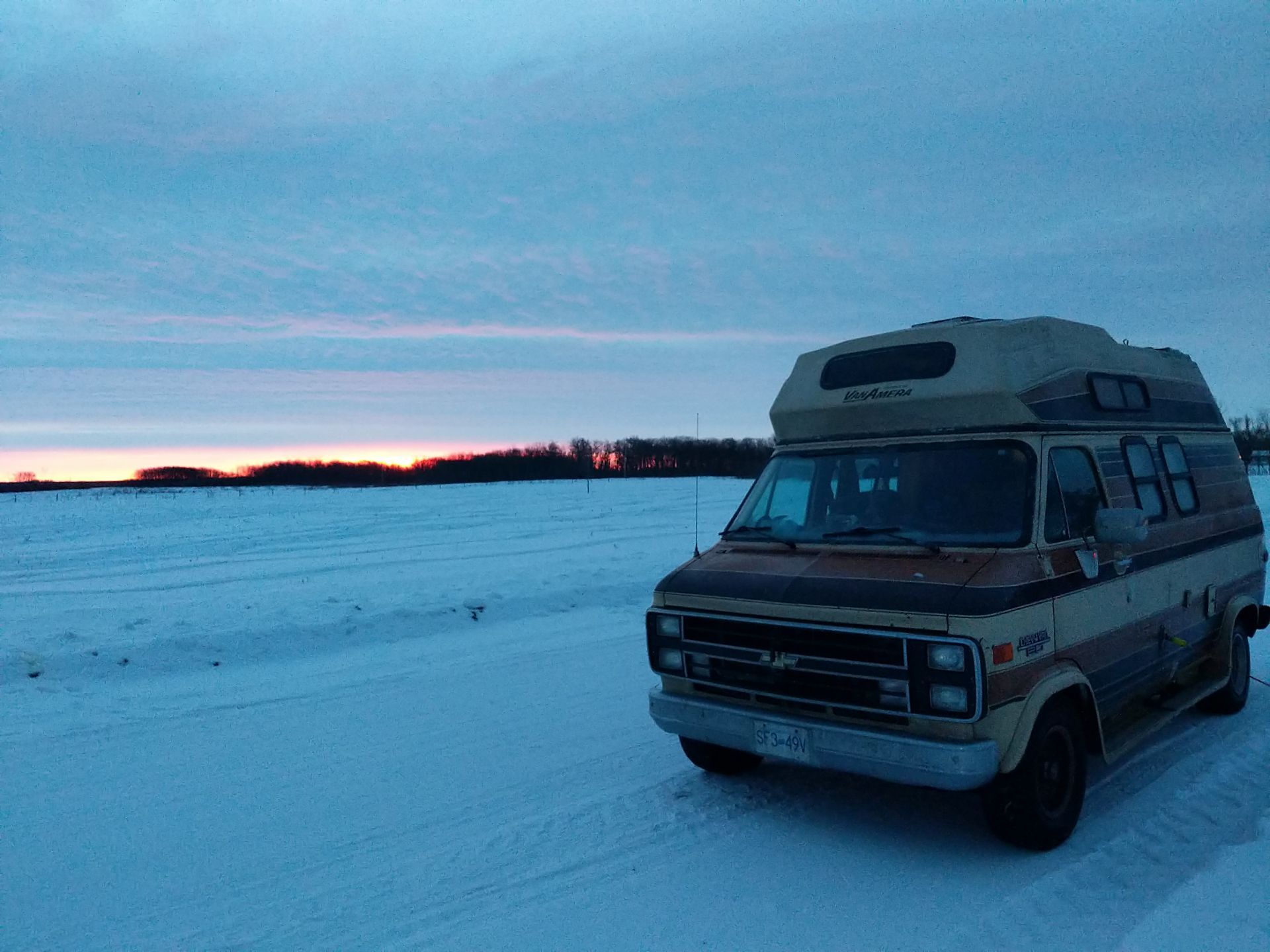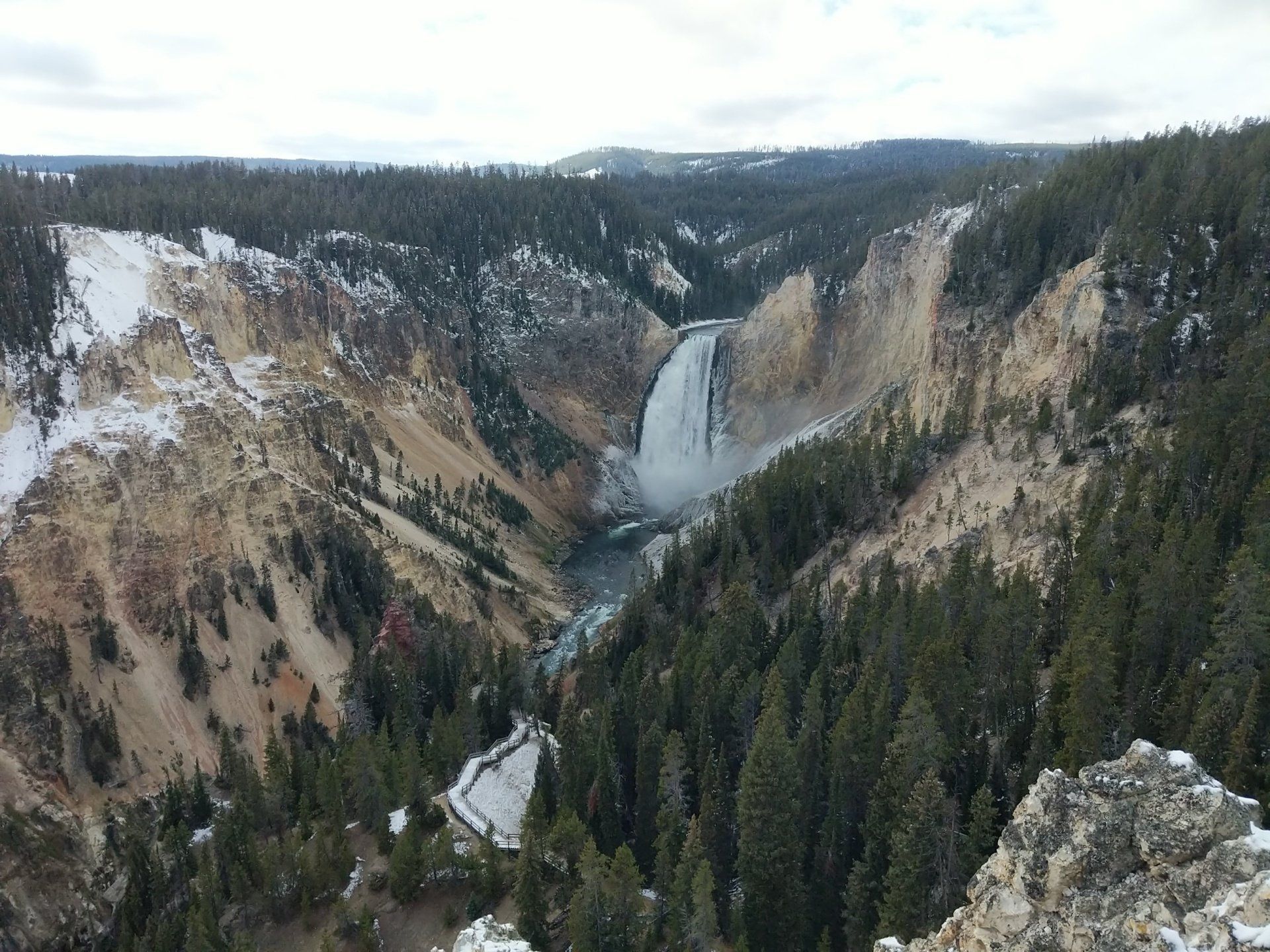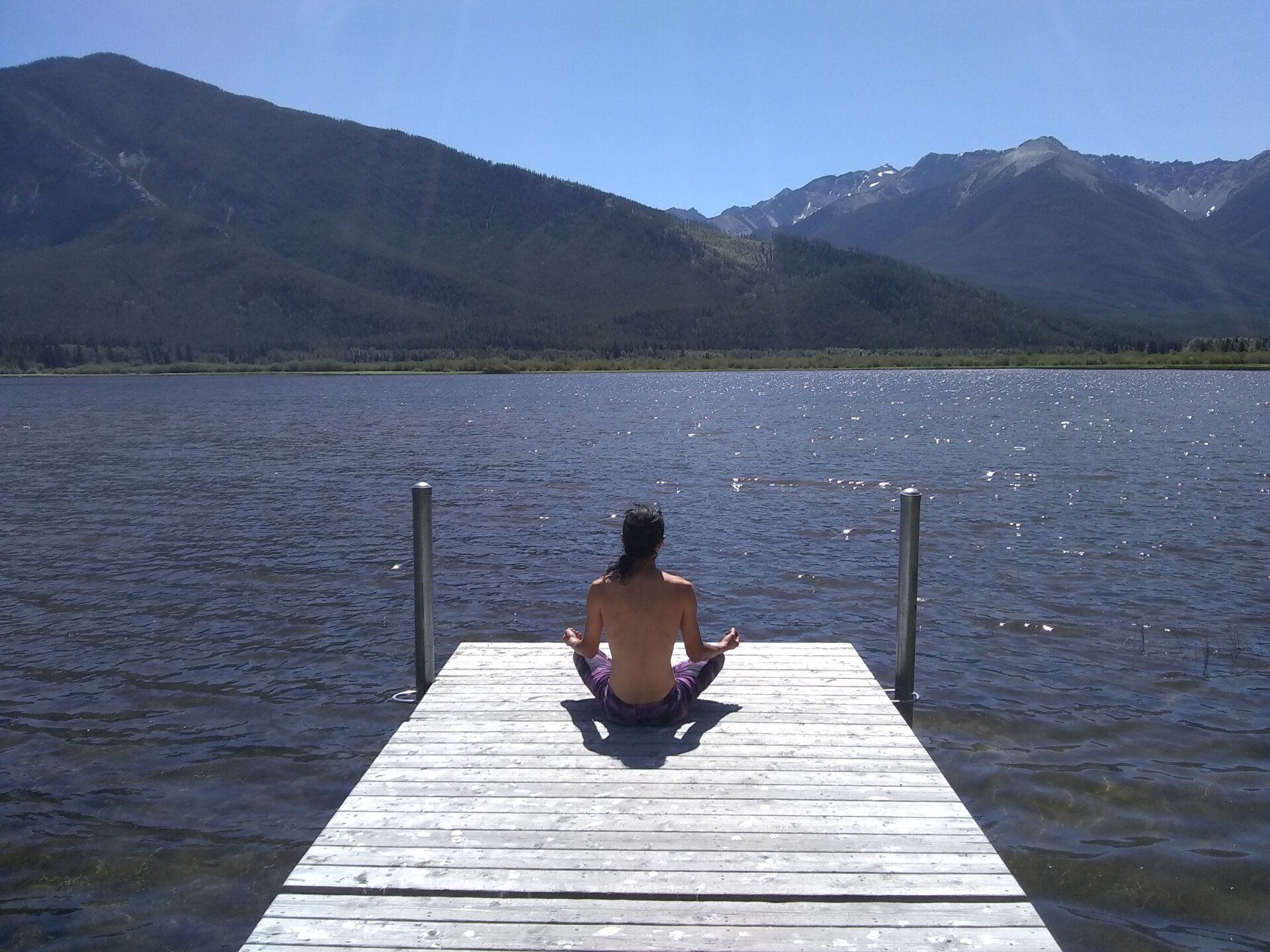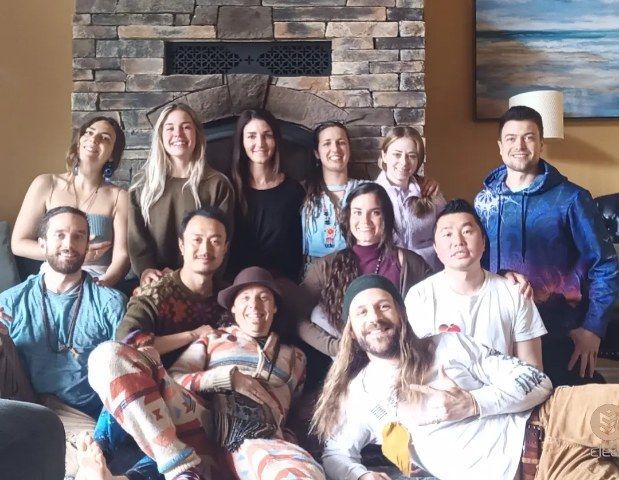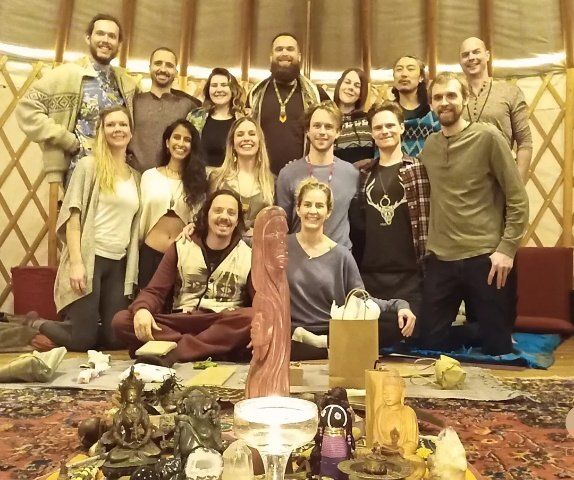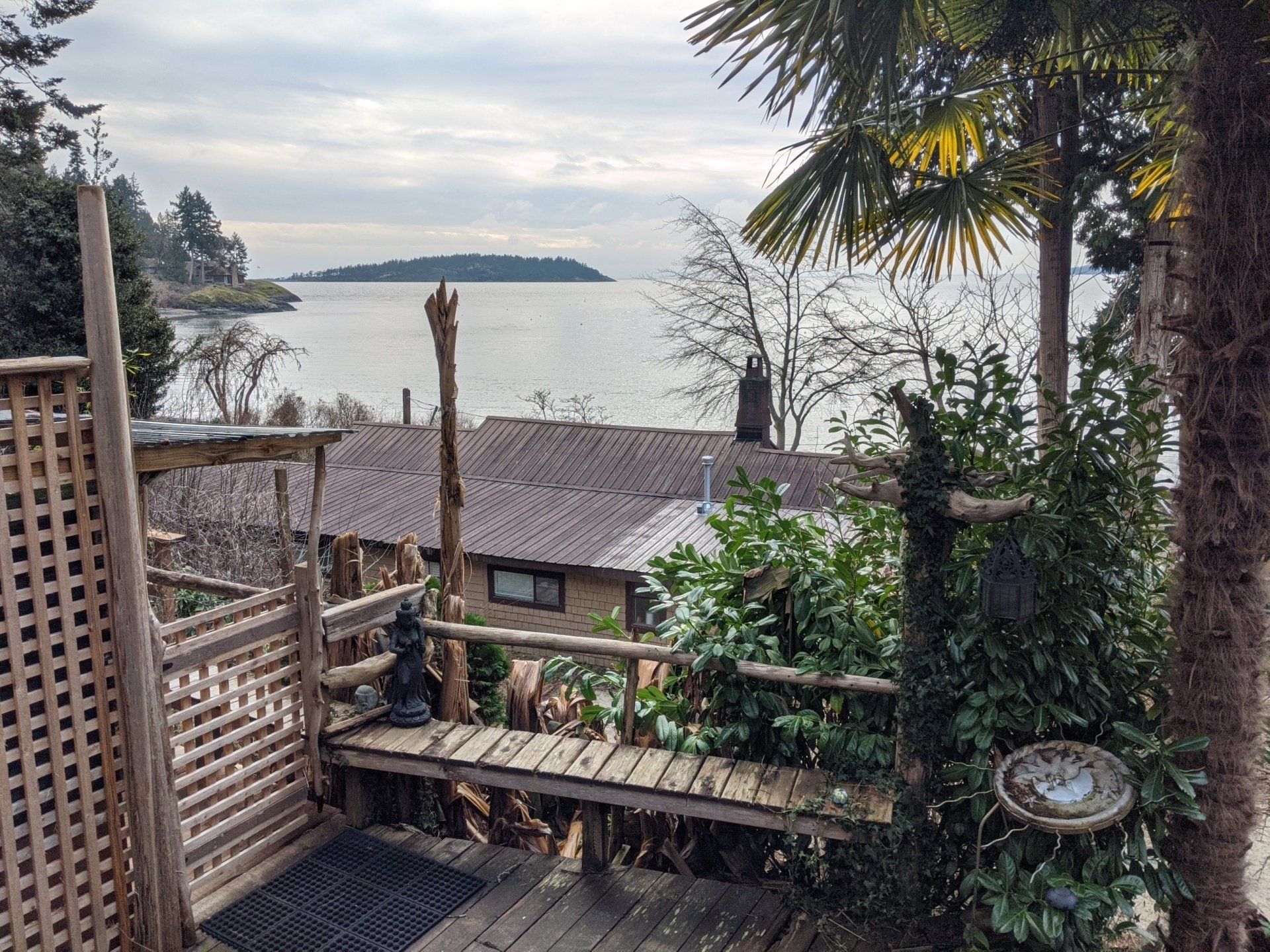A West Coast Wild Pilgrimage
Those who wander furthest afar find the greatest inner salvation
I had a leisurely evening to enjoy this paradise all to myself. In the least traumatizing place possible, I read my book about trauma (which I highly, highly recommend), The Body Keeps the Score. I ate dinner and swam in the ocean, then went to bed early, expecting an early wake up. I got up once in the middle of the night and was able to see some bioluminescence, which are like fireflies, but in the ocean. The moon was quite strong that night, which washed out the brightness of the bioluminescence, but swirling the water with my hand made them light up.
The next day I got up barely in time to pack up and get off the island before the tide came in. The tide brought with it some unexpected treats. I harvested about seven mussels, floating freely in the low tide water, detached from their homes.
At the fork to Eden Peak, I unpacked my camping gear, leaving it in an organized pile, keeping my food and electronics in my backpack for the ascent. It was not even nine o'clock, but I decided to dip into some Electric Kool Aid. Ingest some Love Struck Donkey. I hope you get it... Anyways, from there I continued up. The trail here began to climb, and was steeper than at any previous point. My anticipation rose at the thought of gaining elevation. I've always relished steep hikes... Experience has given me the resilience to keep going, and the view at the top has always more than justified the effort. The bushes got yet thicker, but the way forward was straightforward enough, at least for an experienced backcountry hiker who is used to scratches up and down their legs.
After over an hour, blue sky started peeking through the trees, and I knew I nearly crested the ridge. The path continued towards the growing blue horizon until eventually I came to an opening... Voilà!
I made it to a little fire pit sitting in an opening in the trees with a view of the ocean below, nearby islands beyond, and mountains in the horizon.
There was a plastic water bottle inside the fire pit, and inside it was a bundle of notes that made for a simple guestbook. The last people to sign it visited back in late 2020, over half a year ago! I left my autograph and put the water bottle back. I kept hiking on from the fire pit, but the bushwhacking was pretty full on. There were faint trails here and there, but none appeared human made, nor led anywhere meaningful. Most seemed to be goat trails that disappeared quickly.
The Electric Kool Aid soon really took over me, which hindered bushwhacking through endless thickets of salal bushes and fallen trees. I concluded that there was no clear trail all the way to Eden Peak, and if there was, it was meant for another visit. The fire pit could have been the end of the trail as it were. I started bushwhacking back but got slightly diverted from the path I came. I became slightly worried, and constantly checked maps.me on my phone to ensure I was aligned with previous GPS points I saved on it.
Soon I emerged into an even better viewpoint! And I knew I could finally rest here for quite awhile.
The panorama was expansive, and the scene was as vibrant and alive. The Electric Kool Aid amped up the brightness and saturation, and warped the scene into a mega snow globe with me in the centre, and the edges of the mega sphere rippled like the surface of a lake. In a few key moments of awareness, I felt my body dissipate and merge, becoming one with my whole environment.
I felt connected to this place like I never had any place before. I felt connected to Mother Nature, and felt the collective guilt of humanity's exploits and plunders. I cried deeply for Mother Nature for a good 10 minutes, apologizing on behalf of humanity. I kneeled over watching my snot seep into the ground, noticing the vibrant environment of lichens at my feet. As painful as the sadness was, the cry was a beautiful release, and I emerged from this moment even more steadfast of my role on this earth as an ecowarrior.
From this point, I knew I would do anything to protect Mother Nature, for we were one and the same.
With the hard processing out of the way, now it was time to have fun! My poi skills have reached the point where it's getting attention, and I knew this was a moment for me to combine a rare landscape with creative art, in order to capture the soul. I carefully set up my phone, put on some of my favourite rave music on my external speaker, and broke out the poi!
I was alive and fully activated.
My heart told me I was home. My mind churned. It pondered how beautiful it was to be the only person here, yet it would be amazing to make this accessible to more people. It pondered engaging with the local settlers and First Nations people, using the above video to spur interest and conversation around this area. Did they prefer to keep this place wild? Or was there interest in trail building and maintaining, just a lack of resources? I felt like if the locals gave me a chance, I would be willing to spearhead efforts to make this area more accessible. Just like at Fairy Creek, protesters are building trails to attract tourism, which would lead to increased protection of the area from industrial activity. Hours passed as my heart and mind went through a roller coaster of thoughts, feelings, inspiration and brainstorming.
At some point in the mid-afternoon I was ready to descend. The descent was steep and my legs burned. When I reached the lagoon I headed straight into the ocean. I lingered there for quite awhile, soaking and cooling my muscles, which started to ache and spasm in ways never before experienced in previous trips much more difficult than this one. I wondered if I was getting old, or if the Electric Kool Aid was altering or heightening my muscles' pain.
As I was getting out of the ocean, I encountered a Russian couple possibly in their 50s who was on an 11-day kayaking trip! We had a very lovely conversation and exchanged contact information, specifically so that I could call their son once I was back in reception to tell him they were okay. I decided to take a side trail to a nearby cove and possibly camp there for the night. When I emerged in the cove it was quite full of boats. This turned me off and I decided to keep moving along the beach, aiming for a dock in the distance. I followed along the muddy tide beach, walking on top of oysters to avoid sinking into the mud. This may sound cruel, but there were millions of oysters, and their shells are unbelievably strong!
I eventually reached the dock and came upon a road! I hiked down the road and came upon the local First Nations' Community Centre. Here I met a really nice indigenous man who shared with me his entire life story and gave me a full tour of their impressive modern facility. He dropped me off back at the trailhead where my car was parked. We hugged and exchanged contact information to keep in touch. It was a sweet way to end this adventure making a heart-to-heart connection with a local First Nations man. It left me feeling even more connected to that beautiful spot I just came from earlier that day.
Several days later I shared my video to the local FB page in order to engage with the local population, and got a very mixed reaction. Most comments from people asked me to take the video down and remove any and all references to the hike, preferring to keep the place wild and unknown, a request I was happy to comply with. It was a humbling learning experience and, for better or worse, more of the island knows my face and name now!
